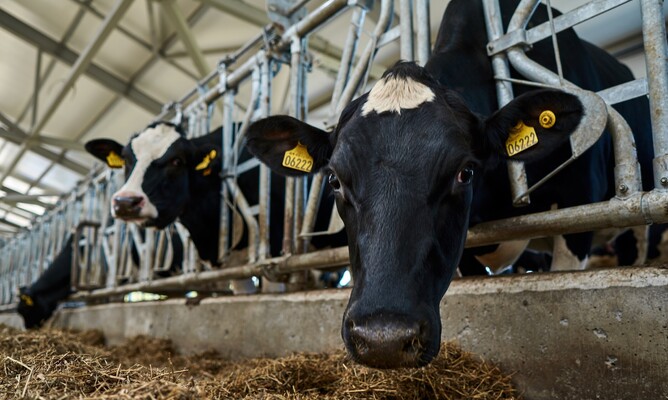BVD (bovine viral diarrhoea) is a major disease in the Australasian dairy herd. It is caused by the BVD virus (BVDV). BVDV infection is extremely common, having affected 60-70% of our herds, with virus active in approximately 15% of herds at any one time. The disease is very complex, causing a variety of production limiting disease syndromes with a variety of economic outcomes. The total cost to the NZ dairy industry was estimated around $150m (average $220 per cow in infected herds) with the cost to individual beef herds around $3000-9000.
The biggest driver of BVD loss is reproductive failure. A less common result is failure to thrive, immune suppression and chronic scours in youngstock. Often the effects go undetected.
The virus can be spread in many ways. Well integrated programs are required to bring it under control, but control is possible.
Virus spread
BVDV multiplies in the white blood (immune) cells of the body, and is spread in a wide range of body fluids, including respiratory and uterine secretions, urine, milk, semen, faeces and saliva. Aerosol transmission for sneezing can happen up to 10m, allowing infection spread “across the fence” between properties.
Most BVDV infections are spread “horizontally” between groups of “in contact” animals, but it can also be spread from dam to calf before birth. If a dam is infected prior to 150 days gestation her calf may not recognise the virus as foreign, and may become permanently infected. This calf will shed virus throughout it’s lifetime to many other cattle, and is deemed a carrier or Persistently Infected (PI) animal.
In a normal previously uninfected animal the virus spreads rapidly around the body and is shed for about 2 weeks (a transient infection, TI). Major disease seldom results and resulting immunity is lifelong.
Disease syndromes
The disease expressed depends on the timing of virus infection and the immune status of the animal. Prior to 40 days, a developing embryo stands no chance and dies. Slightly later in pregnancy a range of calf diseases may happen, including limb deformities and brain/balance problems. Occasionally BVD infections in later gestation calves can trigger abortion/stillbirth; mostly where there are other prenatal infections such as Neosporum operating.
After 150 days gestation the developing calf will mount it’s own immunity, as is the case for the rest of it’s life.
In growing youngstock the virus can spread rapidly through mobs of calves, causing a mild scour which does not respond to worming or antibiotics. The virus may cause immune suppression and contribute to other diseases such as respiratory infections. PI calves can become ill thrifty and very prone to other diseases, but some progress normally.
Very occasionally calves and youngstock will develop intense diarrhoea, with ulcers in the mouth and gut. These cases do not survive. A genuine concern is potential confusion between this disease and catastrophic infections such as foot and mouth.
Transmission of the virus between mobs of heifers at grazing is significant, and if they are pregnant they can bring PI calves back to their (uninfected) herd of origin as a “Trojan Horse” calf.
PI bulls, or even transiently infected (TI) bulls can spread virus in an unexposed herd during mating. Infected semen causes massive infertility issues.
In an adult dairy herd not much disease is seen – 50% of PI animals survive beyond 2 years and many eventually underperform, eventually lining themselves up for culling. The major impacts in a dairy herd are due PI replacements spreading virus while the herd is early pregnant, resulting in poor herd reproductive performance. There can be increased time to conception, more services required and more empty cows. Immune suppression may make cows more susceptible to other disease such as mastitis.
Either PI dams or transiently infected cows can produce PI calves, continuing infection in to the next generation.

